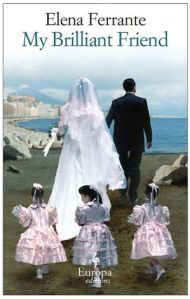“Jenny Brodal had not had a drink in nearly twenty years. She opened a bottle of Cabernet and poured herself a large glass.”
Thus begins The Cold Song by Linn Ullmann and translated by Barbara J. Haveland, with Jenny Brodal breaking years of sobriety with a drink before her 75th birthday party. Jenny is an anti-social curmudgeon who abhors the idea of a party, but her daughter Siri insists on having one, unable to believe her mother could be that bitter or, perhaps, having the celebration to purposefully torture her. As the story backtracks over the preparations leading up to the party, the reader is gradually introduced to all of the other tensions within the family. The husband, Jon Dreyer, has been lying for years about the book he is supposed to be writing but of which he has not a word. Their daughter, Alma, drifts about like a ghost, observing everyone closely while keeping her own secrets. And then there’s Milla.
Milla is the au pair hired to watch Alma and her younger sister for the summer while the family visits Mailund, Jenny’s ancestral home. From the start, she makes Siri uncomfortable. She picks flowers from treasured flower beds, talks a little bit too loudly. Lets Jon look at her a little too much. Something about Milla, Siri thinks, is just not right.
What Siri doesn’t know, but the reader does, is that Milla will not survive the party.
The mystery of Milla’s death gives readers a reason to keep turning pages, but it also manipulates the readers’ relationship wiht the characters. Each character serves as a potential suspect. To me this erodes, rather than enriches, the work, providing a cast of suspicion on each character where it might not be deserved. The Brodal/Dreyer clan does not need a murder to make them interesting, and it feels a bit condescending–or perhaps timid–to believe that the reader needs a page turning mystery to make reading about these characters worthwhile. I had the same sensation from reading The Dinner, but the popularity of that novel shows that many readers disagree with me. Those who loved The Dinner will probably appreciate this novel even more, in which the characters are much more sympathetic.
The book travels past the mystery in a way that The Dinner never managed to. The family must cope with the aftermath of the tragedy. It’s not as if any of them felt a great attachment to Milla, but they do feel a sense of responsibility. Milla’s mother, a famous photographer, begins to send cryptic Jon text messages. Alma, always a strange kid, begins to act more bizarrely and causes trouble at school. And Jenny, well, Jenny just keeps on drinking. In the end, when the reader has assembled all of the available clues and made her judgement, she will probably no longer care, because the heart of the story was never the murder, but instead the slow disintegration of the characters.
P.S. The publisher’s website has some excellent book club questions, and makes me think this would be a good book club book. I need to warn you though, that there are spoilers in the questions.


